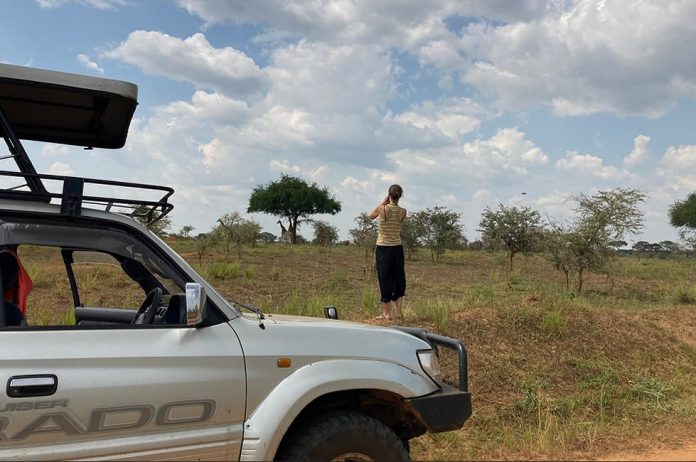Self-drive safaris have become a popular and accessible way for people to experience wildlife and nature in various regions around the world. While the concept of self-drive safaris can vary depending on the location, the idea generally involves individuals or groups driving themselves through designated wildlife reserves, national parks, or conservation areas to observe and enjoy the natural environment and its inhabitants.
Embarking on a self-drive safari in East Africa can be a thrilling adventure, but it’s essential to prioritize safety and thorough preparation.
Here are some key considerations for a safe and enjoyable self-drive safari in East Africa:
- Research and Planning:
Routes and Destinations: Research and plan your route carefully. Identify the national parks and wildlife reserves you want to visit. Consider the time of year and the type of wildlife you hope to see.
Permits and Regulations: Check the entry requirements and regulations for each park or reserve. Some areas may require permits, and there may be specific rules for self-drive safaris.
- Vehicle Rental:
Choose a Reliable Rental Company: Select a reputable and reliable car rental company that specializes in safari vehicles. Ensure the vehicle is well-maintained and suitable for off-road conditions.
Four-Wheel Drive (4WD): Opt for a 4WD vehicle, as many safari roads can be rough and challenging.
- Equipment and Supplies:
Navigation Tools: Carry GPS devices, maps, and guidebooks to navigate through the parks.
Communication: Ensure you have a working mobile phone with a local SIM card for emergencies. Consider a satellite phone for remote areas.
Emergency Equipment: Pack a first aid kit, basic tools, and emergency equipment. Carry spare tires and ensure you know how to change them.
- Accommodations:
Book Accommodations in Advance: Secure accommodations inside or near the national parks well in advance. Some parks may have limited lodging options.
Camping Gear: If camping, ensure you have the necessary gear and know the regulations for camping within the parks.
- Wildlife Safety:
Respect Wildlife: Observe animals from a safe distance. Do not approach or disturb them.
Stay in the Vehicle: It’s generally safer to view wildlife from the confines of your vehicle. Avoid standing up or getting out unless in designated areas.
- Security:
Travel in Groups: If possible, travel with more than one vehicle. This can be helpful in case of emergencies or breakdowns.
Park Gates: Adhere to park opening and closing times. Some parks may have gates that close in the evening.
- Local Knowledge:
Seek Local Advice: Talk to locals, rangers, and other travelers for tips and advice on current conditions and any potential hazards.
- Emergency Preparedness:
Emergency Contacts: Keep a list of emergency contacts, including park authorities, local authorities, and your country’s embassy.
Travel Insurance: Ensure you have comprehensive travel insurance that covers medical emergencies, vehicle breakdowns, and other unforeseen events.
- Weather and Road Conditions:
Check Conditions: Be aware of the weather and road conditions, especially during the rainy season when roads can become challenging.
- Self-Drive Experience:
Off-Road Driving Skills: Make sure you are comfortable with off-road driving and have the necessary skills to navigate challenging terrain.
WHY YOU SHOULD HAVE A SELF-DRIVE SAFARI IN EAST AFRICA?
A self-drive safari in East Africa can be a thrilling and unique experience, offering numerous advantages for adventurous travelers.
Here are some compelling reasons why you might consider a self-drive safari in this region:
Flexibility and Freedom:
With a self-drive safari, you have the flexibility to create your own itinerary and explore at your own pace. You can spend more time in areas that interest you and move on from places that may not be as captivating.
Closer Connection with Nature:
Driving through the wilderness allows for a more intimate experience with nature. You have the opportunity to connect with the environment, wildlife, and landscapes on a personal level.
Cost-Effective:
Self-drive safaris can be more budget-friendly compared to guided tours. You have control over your expenses, especially when it comes to accommodation, meals, and transportation.
Authentic Adventure:
Taking charge of your safari adventure adds an element of authenticity. You’re not just an observer; you are actively participating in the journey, navigating through the terrain, and making your own discoveries.
Photographic Opportunities:
Self-drive safaris allow you to stop and capture memorable moments whenever you encounter wildlife or stunning landscapes. This flexibility is invaluable for photography enthusiasts.
Off-the-Beaten-Path Exploration:
With your own vehicle, you can explore less-touristy areas and take detours to discover hidden gems that might not be on the typical tourist routes.
Cultural Interaction:
Driving through local villages and towns provides opportunities for cultural interactions with the people of East Africa. You can experience the local way of life and gain insights into the rich cultures of the region.
Personalized Experience:
You have the freedom to tailor your safari experience to match your interests. Whether you’re interested in bird watching, photography, or simply enjoying the tranquillity of the wilderness, a self-drive safari allows you to focus on what matters most to you.
Enhanced Wildlife Observation:
Being in control of your vehicle allows you to spend more time observing wildlife behavior without time constraints. You can patiently wait for that perfect moment, enhancing your overall wildlife experience.
Sense of Achievement:
Successfully navigating through East Africa’s diverse landscapes on your own can be a rewarding and empowering experience, providing a sense of accomplishment.
Conclusion
While a self-drive safari offers numerous benefits, it’s essential to be well-prepared, familiar with local regulations, and equipped with the necessary skills and information to navigate the challenging terrains and encounter wildlife safely. Always prioritize safety and adhere to conservation and wildlife protection guidelines.






